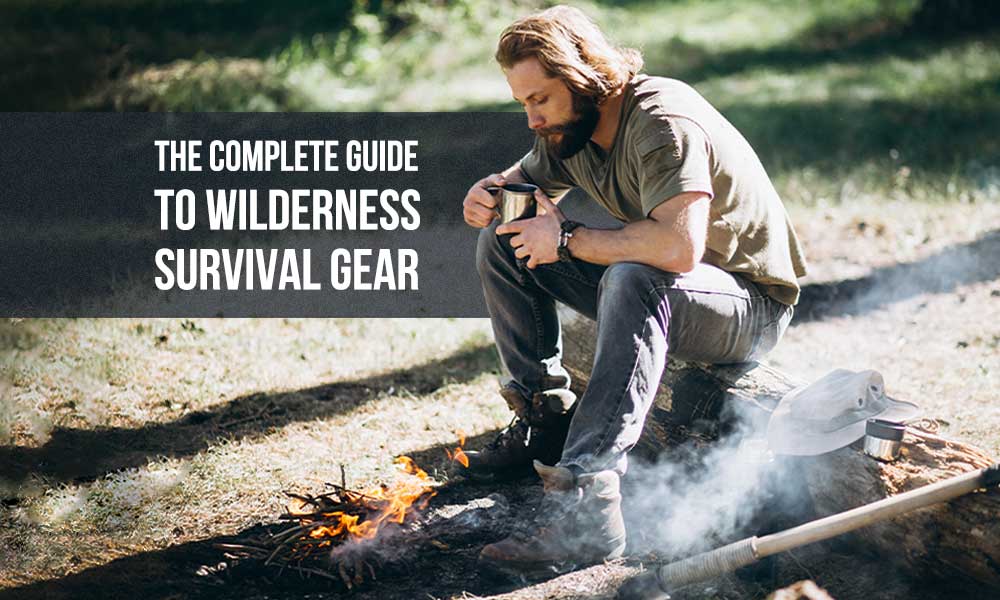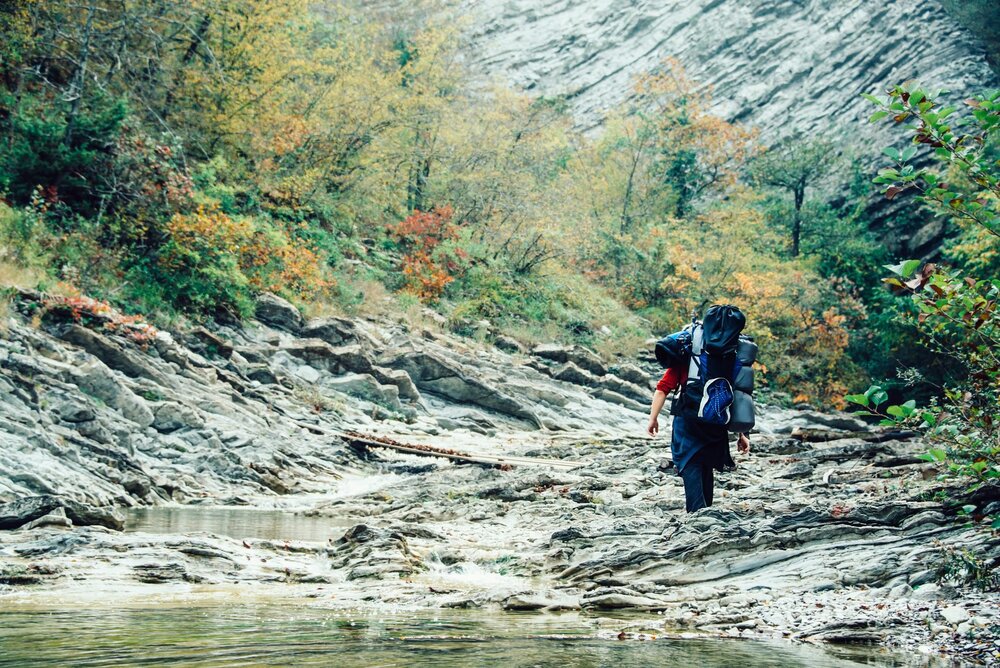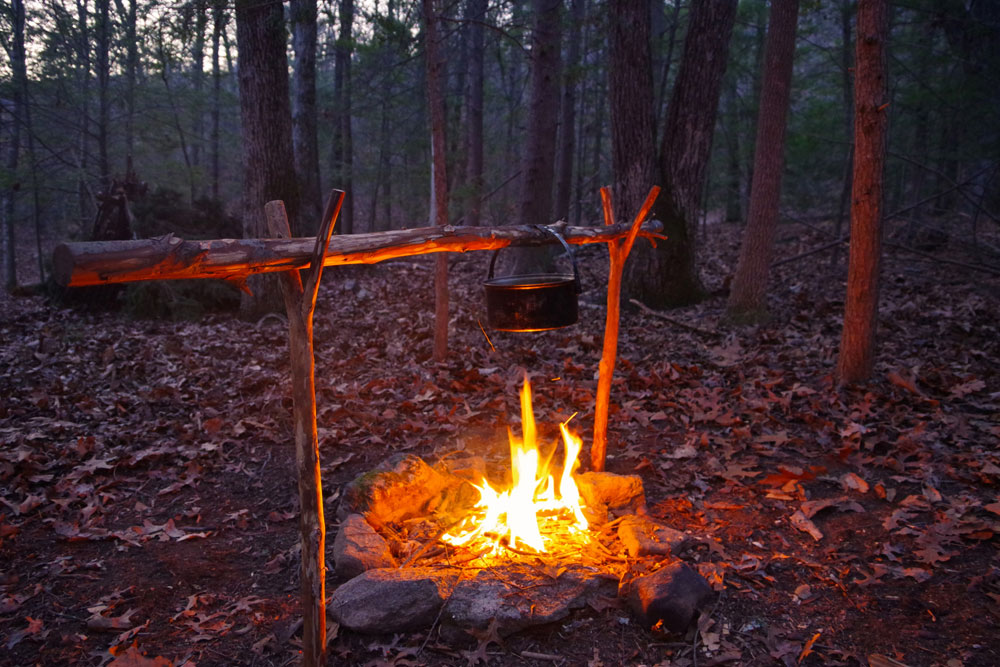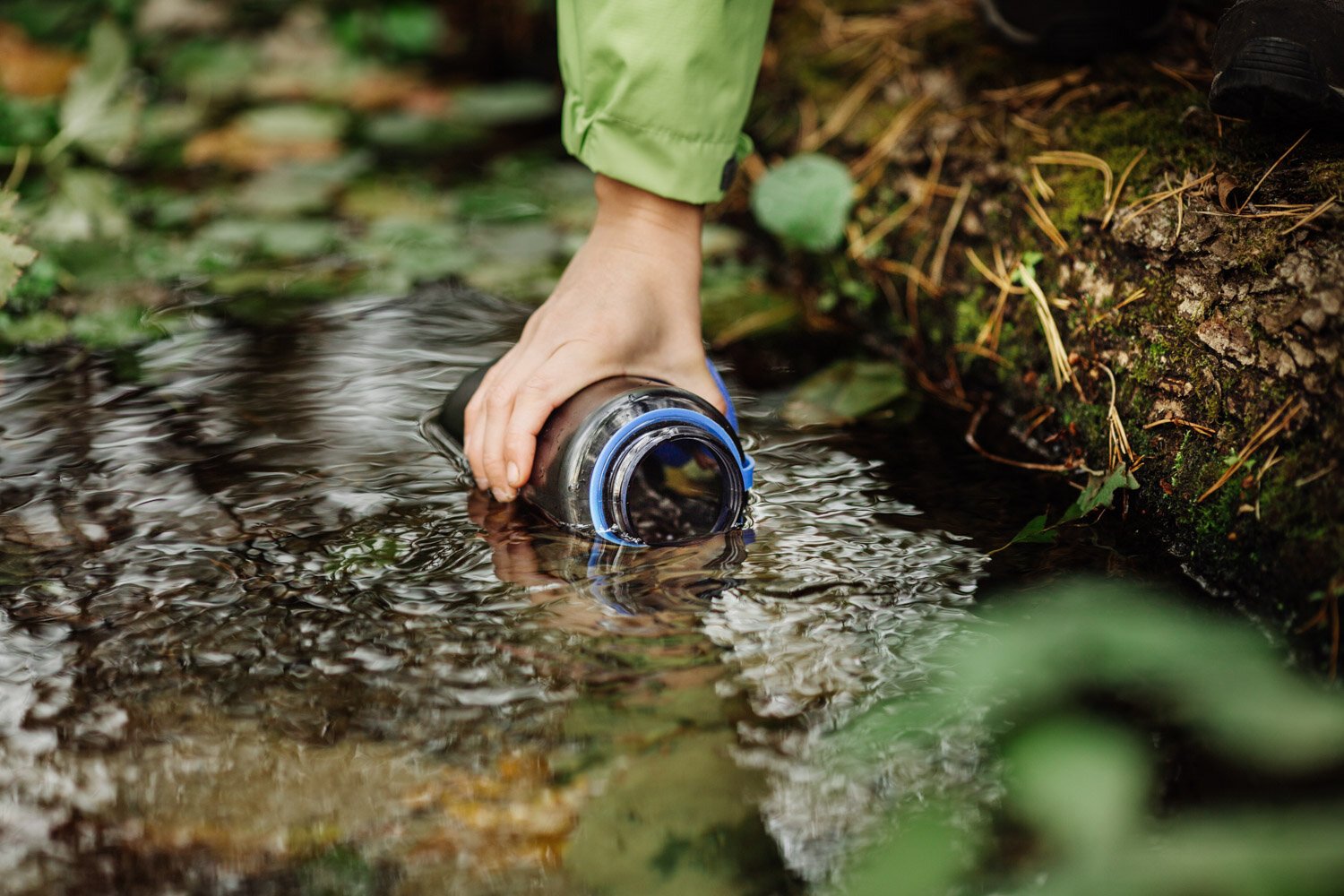
Are you an outdoor enthusiast planning to go through the demanding challenges of the wilderness? Have you set your mind on getting to know nature’s stern face but are not particularly sure about things you’ll need to survive that staring contest? Fret not, we’ve all been there. To increase the chances of you successfully coming out of your survival getaway, Gritr Sports compiled a complete guide to essential survival gear. In this article, we’ll cover everything from backpacks and sleeping bags to fire starters and first aid kits. We’ll also point out a few tips regarding every group of items. Since this is not a guide on surviving techniques, we won’t touch on the million ways to start a fire with a shoelace and a stick or provide information on the average amount of dew you can collect from a single shrub. Instead, we’ll discuss what elements of civilization you can bring into the wilderness to increase your chances of not only surviving but making good memories of the trip.
Table of Contents

Introducing the Basics – What Every Outdoor Adventurer Needs
When it comes to wilderness survival, there are three basic things one needs to take care of. Every outdoor adventurer needs to be able to procure food and water, make a fire to maintain their body temperature, and build a shelter to be protected from the elements. There are two ways you can go here. The first one is to bring ready solutions from civilization: pack water and nonperishable food, matches, fire starters and tents and set off on an adventure knowing you have things figured out. The second way is a more complicated one as it involves finding solutions to those problems on the spot, armed with nothing more than mere tools. A trip like that is more likely to imprint in your memory as unforgettable, but it is fraught with risks you might want to shun. We’ll touch on gear for both of those scenarios.
Shelter Solutions – Tents, Tarps and Sleeping Bags
At night, the woods put on a different face, grinning at you, its teeth gleaming in the dark. Therefore, roaming about after the sun sets is, to say the least, unwise. If you find yourself needing to stay the night outdoors, shelter is your best option. It’s an island of safety and security in this somewhat hostile environment.
A tent is an ideal solution as it provides a secure roof and walls that protect you from the elements and reduce the chances of big bad someone taking an interest in you. Tents come in an array of sizes and shapes, from tiny ones that can only house one person to compact palaces for eight people. Most tents – even the larger ones – can be relatively easily assembled with a few basic tools and techniques. However, tents may have complex designs involving multiple poles and intricate rope loops, so you should always make sure your tent setting skill is sufficient to set a particular tent!
If you are feeling more adventurous, you can use a tarp to build your own shelter, albeit slightly less comfortable than a tent. A tarp is a flat sheet of fabric, lightweight and easy to pack, making it ideal for cases when weight and space are scarce. Tarps also provide more flexibility in terms of setup than tents; they can be pitched in many different configurations depending on the terrain and weather conditions. However, tarps do not provide as much protection from the elements as tents do; they don’t have floors or walls, so rain and wind can still get in. They also require more knowledge and skill to set up properly than tents do.
Sleeping bags are an essential piece of survival gear regardless of whether you sleep in a tent or under a tarp. They keep you warm during the night by trapping your body heat and providing insulation from the ground. They also provide some cushioning for added comfort which can make all the difference after a long day of trying to survive in the outdoors. When choosing a sleeping bag, it’s important to consider the temperature rating, size, weight, and type of filling. Temperature ratings indicate the lowest temperature that the bag can keep you warm in. Make sure to choose a bag that is rated for the coldest temperature that you expect to encounter on your trip. Size and weight are also important as the bag might turn out to be too small for you. Don’t forget to consider the type of filling that the bag uses, whether it’s down or synthetic, as it will affect the weight, packability, and insulation properties of the bag.
Getting Things Hot – Firestarters
Starting a fire is not only one of the most iconic survival skills but also one of the mainstays of your survival. Fire can help with tasks like decontaminating water, preparing food and staying warm. It is also a source of light and comfort in the darkness of the night.
There are different types of fire starters available on the survival gear market today. Sparking fire starters include things like lighters, matches, and ferrocerium rods. They create fire through friction and chemical reactions between two surfaces. There are also tinder fire starters that catch the initial spark and create a sustained flame. Possible materials include paraffin wax, cotton balls soaked in petroleum jelly, and slivers of dried wood.
Be mindful of fire-starting safety rules! The biggest fire begins with a single spark, and you don’t want this spark to be your making. Check local bans and regulations before setting off on a survival journey. Look for established fire circles or make one yourself using stones. Be sure to properly extinguish your fire and break down the firing ring. It’s your responsibility not to let things get out of control.
Going the Hard Way – Water Filters
Staying hydrated is crucial for survival – the lack of water will start to affect your body quicker than the lack of food. If you decided not to pack water with you and experience all the pleasures of true outdoor survival, so be it. However, you still need to get water from somewhere. Water filters and purifiers are the two main devices that can help you get clean drinking water in a survival situation.
Water filters are designed to remove debris and physically strain out microorganisms like cysts and bacteria. They work by trapping particles in a filter or strainer so that only clean water passes through. Water purifiers are designed to remove bacteria and other microorganisms that are too small for filters to catch. They work by using ultraviolet light or chemical treatments to kill bacteria and viruses in the water. Obviously, two-step purification is the most optimal choice, but a water filter should be enough to preclude the most harmful biological pathogens from affecting you.
There are also other ways to purify water, like through boiling, or collecting potable water in the form of dew or rain. With that being said, we do suggest you always include a water filter or purifier on your survival gear list. Too high are the stakes and too harsh may be the consequences of drinking poorly filtered water. Even though water procurement is on the must-do list of every bushcraft survivor, there is no need to eliminate your exit routes.
Completing the Set – Other Survival Tools
Survival involves a lot of hand work, but some tasks require more than mere hands. To ensure safe and successful return from the wilderness, it is essential to equip yourself with the right tools. Apart from the survival gear we’ve already mentioned, there are two more groups of tools that should always be with you: cutting tools and navigation tools.
The necessity of cutting tools is incontrovertible as they enable users to do millions of survival-related tasks. Primarily, cutting. Be it cutting wood, vegetation or other materials or building crude structures and shelters, they are indispensable for everything. Commonly used cutting tools include knives, machetes, axes and hatchets. Knives are especially useful for small tasks such as cutting rope or slicing food whereas larger blades like machetes or axes are better suited for clearing thick brush and splitting wood.
Navigation tools such as compasses or GPS devices will be your lifesaver in case you get lost in the wilderness. A compass can help you determine which direction you should travel to find your way back or reach your destination faster. GPS devices provide more precise directions by locating your exact position on a map. Knowing how to properly use these tools is key to staying safely oriented in any environment you explore, so be sure to give some compass tutorials a look.
Keeping Things Together – Containers
When heading out on a survival trip, one of the most important items you need is a good container to store all your supplies and gear. Your primary container will likely be a backpack or rucksack which should have enough room to store all your survival gear and other essentials – from food and water to tools and shelter-building materials.
It’s essential to find a backpack that offers ample storage space, as well as features like zippered compartments and adjustable straps for added convenience and comfort. Having a durable and waterproof bag is also important so your items remain safe even if there’s bad weather. It’s also important for a backpack to have features that will allow you to distribute the weight evenly lest the back should pull you back with its weight.
A backpack is not the only container you can benefit from. Dry boxes and food storage containers can be of great help in preserving things in their functional form. Matches are close to useless when wet, and some foods spoil pretty quickly if stored properly. Airtight containers or resealable plastic bags are the answers to those issues.
Dressed for the Occasion – Outdoor Apparel and Footwear
Last but not least, apparel and footwear. Those will likely be on your person in contrast to other items, but that doesn’t belittle their role in the slightest. The right clothing can help you stay warm, dry and comfortable, whereas the right footwear can protect your feet from the elements.
The most important qualities to look for in outdoor clothing are breathability and insulation. They don’t need to be present in one garment. Breathable fabrics will help keep you cool during hot days and prevent sweat from building up on your skin. The latter is particularly important as setting camp and procuring food are all highly intensive activities. Insulation is also key for keeping you warm during cold evenings and nights in the forest. Nights in the wilderness can be much colder than the majority of people expect, so it’s important to have clothing that can keep you warm when temperatures drop.
In terms of footwear, it’s best to opt for shoes or boots with good traction and support. That will help prevent slips and falls on uneven terrain as well as provide extra cushioning for your feet when walking long distances. It’s also a good idea to invest in waterproof shoes or boots if you plan on spending extended periods outdoors in wet conditions.
Last Resort – First Aid Kit
Injuries follow outdoor enthusiasts on every step, and one should be prepared for them to catch up. There is no help to call for in the wilderness, so it all comes to you and the survival gear you took with you. That’s why it’s important to be prepared and have a well-stocked first aid kit with you at all times.
A good first aid kit should include items such as bandages, gauze, antiseptic wipes, tweezers, scissors, adhesive tape, pain relievers, and antihistamines. It should also include items such as snake bite kits and splints for broken bones or sprains. Having these items on hand will allow you to treat minor injuries quickly and effectively so that they don’t become more serious problems down the line.
Conclusion
There is no such thing as being overprepared when it comes to outdoor survival. However, the capacity of your backpack is pretty limited, that’s why it’s important to prioritize. Whether you plan to bring pre-made solutions or figure everything out on the move with a set of basic tools, it’s crucial to pack the right gear with you. The list we’ve provided addresses the basic necessities of a survivalist and is sure to get you through your trip to the wilderness. The majority of items from this list you can find on our website, Gritr Sports.
FAQs
What are the essentials for wilderness survival?
The list of essentials includes items that can meet basic needs like hydration, sustenance, sleep, and warmth. Bottled water, nonperishable food, firestarters and tents are on the list of survival necessities.
What are some tips for using wilderness survival gear?
- Choose quality gear that is designed for the environment you will be in.
- Pack light but make sure you have all the essentials.
- Practice using your gear before heading out into the wilderness so you know how to use it in an emergency.
- Be prepared for any weather conditions by bringing extra layers of clothing and blankets to keep warm if necessary.
- Have a plan for what to do if you get lost or injured in the wilderness and make sure someone knows where you are going and when you plan on returning home.
How long can the average person survive in the wilderness?
As a rule, a person can survive for three minutes without air, three days without water, and three weeks without food. As long as you meet the necessities, you can survive for quite a long time.
What is the most valuable survival tool?
If we were to choose a single survival tool to take to the wilderness, it would have been a fire starter. That item can help you meet all the necessities, be it preparing food, boiling water, staying warm or scaring off predators.











Leave a Reply